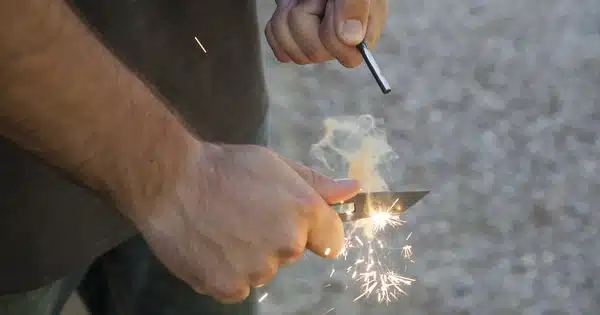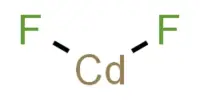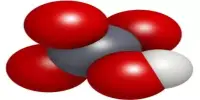Ferrocerium is a pyrophoric alloy of mischmetal (cerium, lanthanum, neodymium, various trace lanthanides, and some iron – approximately 95% lanthanides and 5% iron) toughened by the addition of iron and/or magnesium oxides. It is a man-made metallic material that is often used in fire starters, camping lighters, and survival packs. It is a pyrophoric alloy, which means it can catch fire when exposed to air.
When the combination is struck with a harder object, it creates hot sparks that can reach temperatures of 3,315 °C (6,000 °F) when rapidly oxidized by the striking process. Striking both scrapes fragments off, exposing them to the oxygen in the air, and easily ignites them by friction heat due to cerium’s remarkably low ignition temperature of between 150–180 °C (302–356 °F).
Composition
Ferrocerium is primarily composed of iron and cerium, with smaller amounts of other rare earth metals such as lanthanum and neodymium. The exact composition may vary depending on the manufacturer and intended use.
Fire-starting properties
Ferrocerium is highly prized for its ability to create sparks at high temperatures when struck with a hard surface, like a piece of steel or a striker. When the rod is scraped or scratched, tiny metal shavings are shaved off, which ignite due to the friction and the pyrophoric nature of the alloy. The sparks produced can reach temperatures of over 3,000 degrees Fahrenheit (1,650 degrees Celsius).
Discovery
Carl Auer von Welsbach, an Austrian chemist, invented ferrocerium alloy in 1903. It gets its name from its two principal constituents: iron (from Latin: ferrum) and cerium, a rare-earth element that is the most frequent among the lanthanides in the mixture. Except for the extra iron and magnesium oxides added to harden it, the mixture is similar to that found naturally in thorium mining tailings, which Auer von Welsbach was examining. The pyrophoric effect is determined by the alloy’s brittleness and low autoignition temperature.
Uses
To utilize a ferrocerium rod, hold it at an angle and scrape it with a knife, a metal item, or a specialized striker. To start a fire, direct the ensuing sparks onto a small mound of tinder, such as dry leaves or cotton.
Advantages
Outdoor enthusiasts, campers, hikers, and survivalists choose ferrocerium rods because they are exceedingly resilient and can work in wet environments. Ferrocerium rods, unlike matches or lighters, do not rely on chemical reactions or fuel sources, making them a dependable and long-lasting fire-starting tool.














